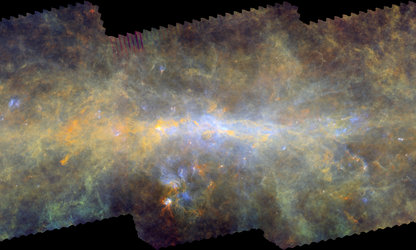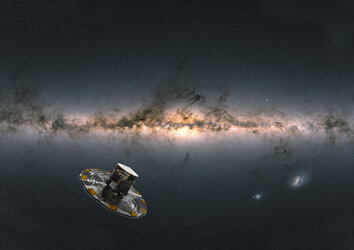Accept all cookies Accept only essential cookies See our Cookie Notice

About ESA
The European Space Agency (ESA) is Europe’s gateway to space. Its mission is to shape the development of Europe’s space capability and ensure that investment in space continues to deliver benefits to the citizens of Europe and the world.
Highlights
ESA - United space in Europe
This is ESA ESA facts Member States & Cooperating States Funding Director General Top management For Member State Delegations European vision European Space Policy ESA & EU Responsibility & Sustainability Annual Report Calendar of meetings Corporate newsEstablishments & sites
ESA Headquarters ESA ESTEC ESA ESOC ESA ESRIN ESA EAC ESA ESAC Europe's Spaceport ESA ESEC ESA ECSAT Brussels Office Washington OfficeWorking with ESA
Business with ESA ESA Commercialisation Gateway Law at ESA Careers Cyber resilience at ESA IT at ESA Newsroom Partnerships Merchandising Licence Education Open Space Innovation Platform Integrity and Reporting Administrative Tribunal Health and SafetyMore about ESA
History ESA Historical Archives Exhibitions Publications Art & Culture ESA Merchandise Kids Diversity ESA Brand Centre ESA ChampionsLatest
Space in Member States
Find out more about space activities in our 23 Member States, and understand how ESA works together with their national agencies, institutions and organisations.
Science & Exploration
Exploring our Solar System and unlocking the secrets of the Universe
Go to topicAstronauts
Missions
Juice Euclid Webb Solar Orbiter BepiColombo Gaia ExoMars Cheops Exoplanet missions More missionsActivities
International Space Station Orion service module Gateway Concordia Caves & Pangaea BenefitsLatest
Space Safety
Protecting life and infrastructure on Earth and in orbit
Go to topicAsteroids
Asteroids and Planetary Defence Asteroid danger explained Flyeye telescope: asteroid detection Hera mission: asteroid deflection Near-Earth Object Coordination CentreSpace junk
About space debris Space debris by the numbers Space Environment Report In space refuelling, refurbishing and removingSafety from space
Clean Space ecodesign Zero Debris Technologies Space for Earth Supporting Sustainable DevelopmentLatest
Applications
Using space to benefit citizens and meet future challenges on Earth
Go to topicObserving the Earth
Observing the Earth Future EO Copernicus Meteorology Space for our climate Satellite missionsCommercialisation
ESA Commercialisation Gateway Open Space Innovation Platform Business Incubation ESA Space SolutionsLatest
Enabling & Support
Making space accessible and developing the technologies for the future
Go to topicBuilding missions
Space Engineering and Technology Test centre Laboratories Concurrent Design Facility Preparing for the future Shaping the Future Discovery and Preparation Advanced Concepts TeamSpace transportation
Space Transportation Ariane Vega Space Rider Future space transportation Boost! Europe's Spaceport Launches from Europe's Spaceport from 2012Latest
Herschel’s 37 000 science observations
Thank you for liking
You have already liked this page, you can only like it once!
This animation shows the timeline of over 37 000 scientific observations made by ESA’s Herschel space observatory throughout its entire mission, condensed into less than a minute.
The animation was prepared by Pedro Gómez-Alvarez in the Herschel Science Centre and presented by Herschel’s Project Scientist Göran Pilbratt during the opening session of The Universe Explored by Herschel symposium held at ESA’s ESTEC facility, in Noordwijk, the Netherlands, last month.
The animation runs from launch, on 14 May 2009, until the infrared observatory made its last observation on 29 April 2013.
Running through the centre of the graphic is the ‘ecliptic plane’ tracing the paths of the planets with respect to Herschel’s viewpoint from its orbit around L2, which is located 1.5 million kilometres behind the Earth as viewed from the Sun.
A horseshoe shape marks the Galactic Plane, the direction in which much of the Milky Way’s mass lies, and where many of Herschel’s observations were focused.
In total, Herschel observed almost a tenth of the entire sky for over 23 500 hours, providing new views into the previously hidden Universe, pointing to unseen star birth and galaxy formation, and tracing water through the Universe from molecular clouds to newborn stars and to their planet-forming discs and belts of comets.
Its two camera/imaging spectrometers, PACS (Photoconductor Array Camera and Spectrometer) and SPIRE (Spectral and Photometric Imaging Receiver), which together covered wavelengths of 55–670 microns, provided about two thirds of Herschel’s sky coverage in parallel imaging mode. These data points are shown in yellow.
PACS and SPIRE photometry observations are indicated in blue and green, which together with spectroscopy performed with PACS, SPIRE and the third science instrument, HIFI (Heterodyne Instrument for the Far Infrared, covering wavelength bands of 157–212 microns and 240–625 microns) make up the remainder.
Since 29 October 2013, when the last observed data went public, all of the Herschel data are available to the worldwide astronomical community. The vast data archive will become the scientific legacy of the mission, destined to yield far more discoveries than have been made over the mission lifetime so far.
-
CREDIT
ESA & P. Gómez-Alvarez / music: B. Lynne. -
LICENCE
ESA Standard Licence
-
Animation
-
-
-
-

Herschel’s 37 000 science observations

Herschel’s view of the Galactic Centre

Herschel’s view of RCW 120

Herschel’s view of the Galactic Centre















 Germany
Germany
 Austria
Austria
 Belgium
Belgium
 Denmark
Denmark
 Spain
Spain
 Estonia
Estonia
 Finland
Finland
 France
France
 Greece
Greece
 Hungary
Hungary
 Ireland
Ireland
 Italy
Italy
 Luxembourg
Luxembourg
 Norway
Norway
 The Netherlands
The Netherlands
 Poland
Poland
 Portugal
Portugal
 Czechia
Czechia
 Romania
Romania
 United Kingdom
United Kingdom
 Slovenia
Slovenia
 Sweden
Sweden
 Switzerland
Switzerland
























